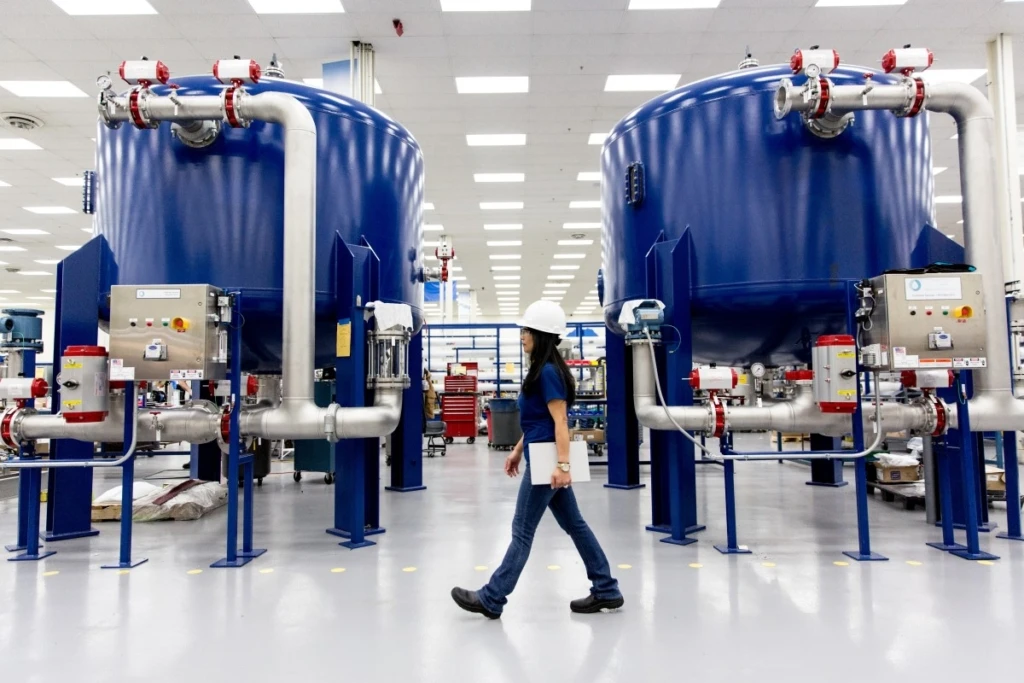
Advance manufacturing digital operations with industrial IoT solutions
The integration of advanced technologies in industrial and manufacturing operations continues to expand as companies strive to stay competitive and efficient even when challenges arise. Our customers are unlocking the next level of efficiency, agility, and sustainability in their physical operations by deploying AI, machine learning, digital twins, 5G, and other innovations that can be used to advance operations in industrial settings.
To reflect that customers are looking beyond only the Internet of Things (IoT) to transform their business outcomes, we’ve rebranded our report from IoT Signals to Digital Operations Signals. In this era of AI, we want this report to be a resource for ideas and perspectives from industry peers and practitioners implementing AI-powered digital operations.

Digital Operations Signals
This report reveals insights from companies that have successfully implemented IIoT projects.
Because time to value for operational technology projects is vital to reduce the risk of being disrupted by new competitors who launch with highly digitized operations, this edition of Digital Operations Signals focuses on customers’ real-world experiences in initiating and scaling projects. We surveyed 300 customers around the globe across the manufacturing, energy, and other industrial sectors. We also interviewed a range of partners—predominantly independent software vendors and solution integrators—to gather a holistic, in-depth understanding of the opportunities and challenges of scaling digital operations. We broke down these Industrial Internet of Things (IIoT) initiatives into three categories:
- Smart operations: This includes projects aimed at enhancing the efficiency of a company’s internal operations, energy management, and safety protocols, including those in factories, stores, or general buildings.
- Smart supply chain: These projects focus on improving the efficiency of supply chains, including transparent supply chain solutions and connected warehouses.
- Connected products: These projects aim to increase the value of products that have been sold to customers. Examples of connected product enhancements include remote service capabilities and product usage optimization.
Finally, this report looks at the three primary approaches to implementing digital operations and the advantages of each:
- Build, in which an organization, either on its own or with the help of an external services company, builds much of the tech stack needed for an IIoT solution.
- Buy-and-Integrate, in which an organization directly or indirectly buys individual platform components or a partial application for the IIoT solution and integrates it.
- Buy, in which an organization buys an entire plug-and-play IIoT solution that requires only minor integration efforts.
Current trends in IIoT adoption
While interviewing and surveying customers around the globe, we came away with insights about the state of IIoT, how companies are implementing the technology, and what pain points remain. Here are six insights we heard from those who have successfully implemented projects:
- Industrial IoT is becoming mainstream. Among the organizations we surveyed, 65 percent are now executing an IIoT strategy. In the meantime, challenges related to budget availability, project complexity, and data management have decreased by approximately 50 percent compared to five years ago. Additionally, IIoT projects have a median break-even time of 20 months, compared to 24 months five years ago.
- Companies are increasingly looking to buy off-the-shelf solutions. The share of IIoT projects for which companies buy an off-the-shelf solution has risen from 9 percent to 30 percent in the past two years. When an off-the-shelf solution is available, the median time to break even decreases by 40 percent.
- There are good reasons to use each project approach: Build, Buy-and-Integrate, and Buy. The Build approach provides the freedom to customize an entire solution to match specific needs and not lock in with any vendor. The Buy-and-Integrate approach combines proven technology and product support with the freedom to partially customize. The Buy approach is cost-effective and allows for a quicker return on investment (ROI) with few integration challenges.
- Large companies prefer the Build approach; electronics and machinery companies prefer Buy-and-Integrate. Key sectors that prefer the Build approach include building operations, automotive, and retail. Key sectors that tend to choose the Buy-and-Integrate approach include electronics and machinery, while the key sector most commonly using the Buy approach is pharmaceuticals.
- Strong vendor ecosystems speed up time to value. Vendors are teaming up in partner ecosystems to provide a nearly off-the-shelf solution that accelerates time to value. Some of the initiatives that reduce time-to-value include out-of-the-box solution components and dedicated technical and business case support.
- Budget constraints have faded, but key pain points remain. Implementation challenges and budget restrictions have dropped as key concerns compared to five years ago. But cybersecurity remains a prime concern, and the talent and knowledge gap has increased.
Why customers choose Build, Build-and-Integrate, or Buy
The three approaches to implementing IIoT projects each have pros and cons; none of the three is a universal solution. However, no matter which approach they chose, our survey found that companies are generally satisfied with their projects. Overall, 89 percent of respondents said their solutions met or exceeded their expectations. That satisfaction rate varies somewhat, however, depending on what approach is used.
Build approach exceeded expectations: 40 percent
A vice president of a cloud integration company said the Build approach gives a company total ownership of its solution. “It is your IP, and you have the freedom to evolve your solution with your business and choose the cloud provider that fits with your current infrastructure.”
Buy-and-Integrate approach exceeded expectations: 40 percent
Companies choosing the Buy-and-Integrate option note that it allows for customization without the time and cost of a custom-built solution. “It was hard to find an off-the-shelf solution and custom-build did not meet the ROI,” said the operations director of a food and beverage company.
Buy approach exceeded expectations: 13 percent
While a smaller percentage of companies using the Buy approach said their projects exceeded expectations, 70 percent said their projects met their expectations, since for the Buy approach the expectations are much clearer upfront. That tradeoff is balanced for many by the faster return on investment and lower costs on average of using a ready-made solution. “It is rarely necessary to go for a custom-made solution in the first stages of this journey, as we need to first learn and understand the customer needs,” said the logistics director for a machinery company.
Download the report and learn more
As IIoT solutions, AI, and related technologies transform industrial operations, enterprises are weighing the best approaches to achieve their digital initiatives. We invite everyone to download the Digital Operations Signals report to learn more about strategies that can help accelerate time to value on your digital transformation initiatives.
Additionally, please join us at Microsoft Inspire 2023 to learn how solutions from our partner ecosystem can help to advance digital operations and fuel your business growth and profitability.




